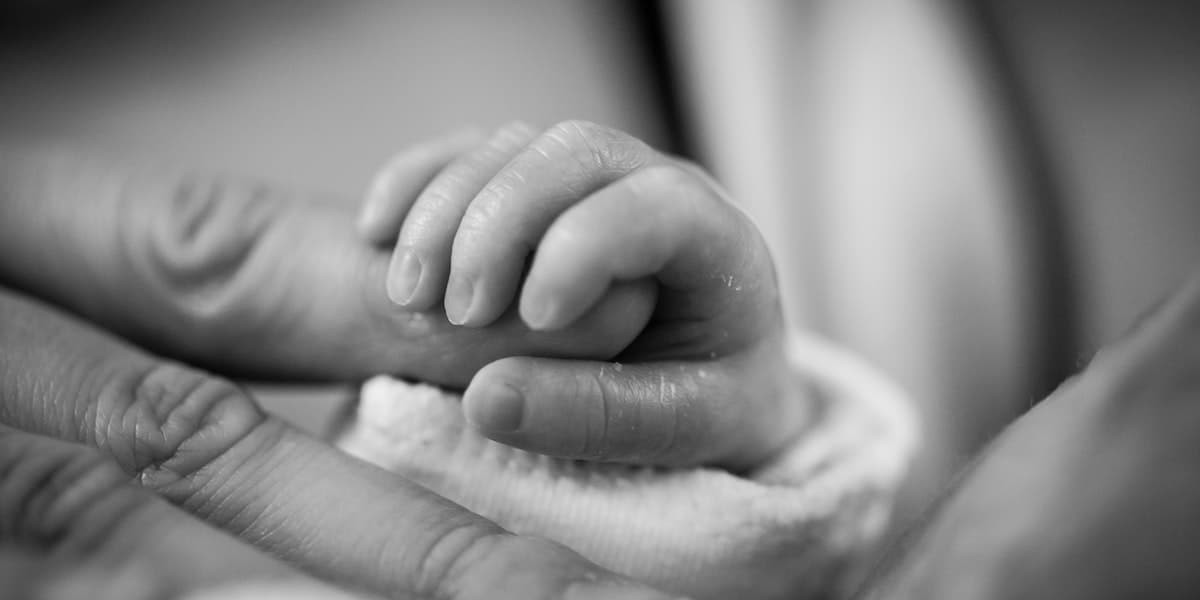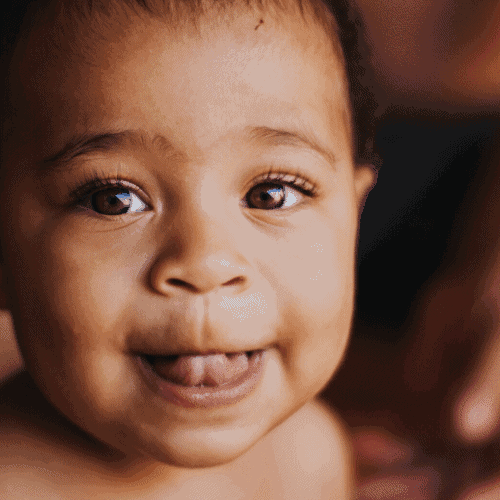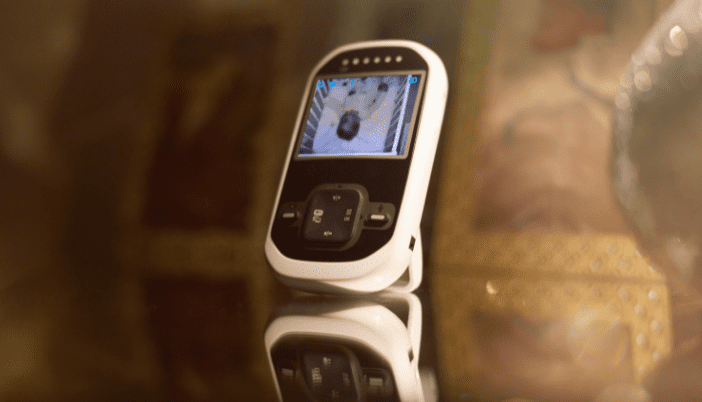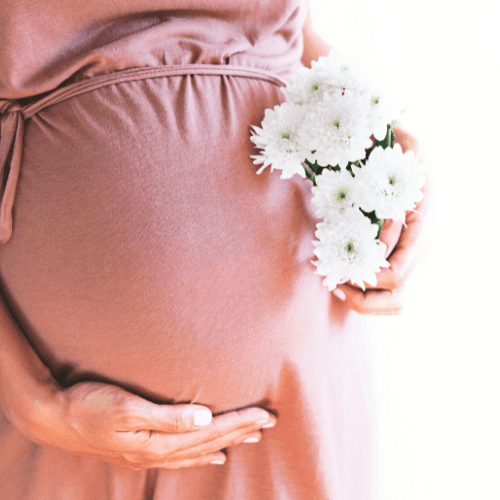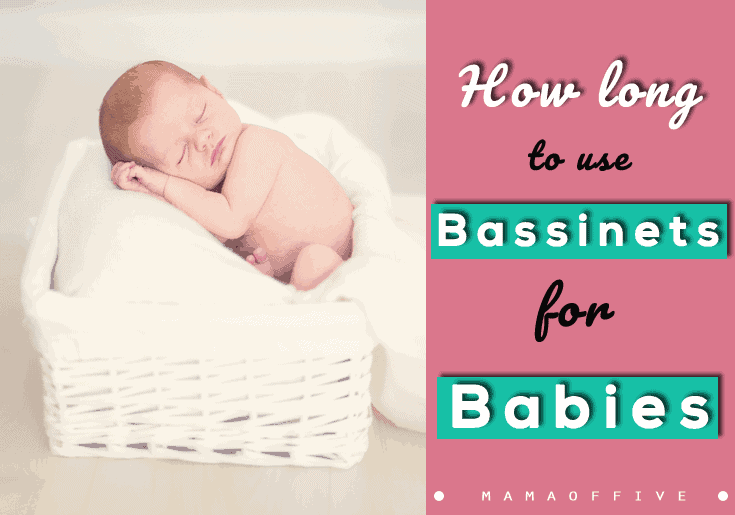We all love our baby’s bassinet, the convenience of our little one being right there, the elegance of the furniture itself, the way baby looks all small and cosy – but when are they too snug?
You might have heard horror stories about bassinets tipping over in the night, or maybe your baby is starting to catch her tiny toes on the edge as she sleeps. Whatever the case, every parent should be informed on when to retire the bassinet.
As an Amazon Associate, I earn from qualifying purchases. The links below maybe affiliate links. Please read my disclosure policy for more information.
Babies should generally move out of the bassinet between 4 and 6 months, but when exactly? When is right for your baby? We have a few clues as to when the time might have come to set up the crib.
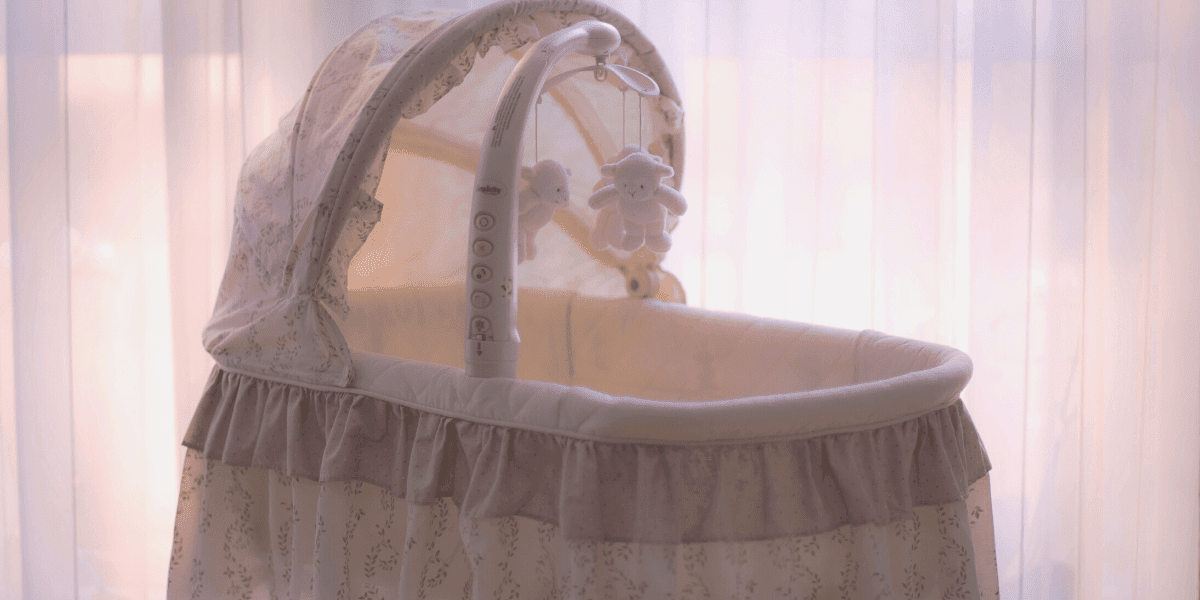
Size
Sometimes ‘big’ doesn’t mean ‘developed’ or ‘grown up’, it just means big. Is your baby scuffing his feet on the bottom edge? Is her head a bit close to the top side for comfort when you look over in the night?
Infants have ways of telling us when they’re uncomfortable. Is she fussier than usual when you try to put her down? Does she wake up unexpectedly at times she would normally be getting some sleep? Does he ever sleep or wake up in strange positions, almost as if stuck?
Fussiness and unexpected crying could be a sleep regression, which would be perfectly ordinary around month 4 – but it might be worth checking the size restrictions on your bassinet.
Weight
While some companies helpfully tell you how long a baby their bassinet can sleep, most tell you how heavy a baby it can hold comfortably. Be sure to have a look at the specifics of your bassinet.
While most hold babies up to 20lb or so, some can only manage little ones as small as 10lb, and some will do you the favour of bearing a full 30lb of squishy baby rolls without a problem.
You may only notice weight is a problem once the thin mattress begins to struggle to hold your growing child, bowing in the middle – this is obviously a sign it’s time to make the transition out of the bassinet.
However, there may well be other signs before you get the point when baby is physically too big or heavy.
Mobility
Now we’re talking about your baby being ‘big’ as in ‘grown up’. You’ll find most modern bassinets come with the strict instructions to move your baby out once they can roll over unaided.
Our beloved bassinets tend to have shallow sides, with the mattress itself quite a height from the floor to make bedside access more convenient – this could lead to trouble once baby can throw her weight around. If, when playing during the day, you notice baby can:
- roll over unaided
- pull themselves to a sitting position.
- or rock a rocking bassinet or bounce a bouncer vigorously by moving.
It’s time for baby to graduate from the bassinet.
Since this is a safety issue, always make sure to check the restrictions that come with the model of your particular bassinet. If you can’t find it anywhere on the packaging or in the instructions, try looking the product up using a search engine or your favorite parent forums.
At the end of the day, if you don’t feel comfortable leaving your baby in the bassinet, it’s time to move on.
The question is… on to what?
Where to now?
So, baby’s too big, she’s rolling over – it’s time. For a crib? Where are we putting it? Is this the time to make the move to the nursery? There’s so much advice flying around when it comes to sleep and developing sleep habits – let’s have a look at it.
Firstly, the AAP recommends that new babies sleep in the same room as their parents for at least 6 months… but ideally for a full 12. Sleeping in the same room as your baby for the first six months has been shown to reduce the risk of SIDS by 50%.
The rule seems to be ‘keep baby as close as possible for as long as possible’. So, if you’re moving your big, bouncing, rolling 4-month-old out of the bassinet – it might be the best idea to keep them in the room, just with a different setup. This might just make you sigh and look back to nights when you slept well with longing.
It’s true that sharing a room with an infant can lead to worse sleep for everyone involved. Can you be the best parent you can be if your sleep, and maybe your relationship, is suffering? Some find having baby in a nursery instead of in your bedroom can help solidify a bedtime routine – and help baby sleep for longer stretches.
However, sleep consolidation isn’t always best. Sharing means you can easily reach and wake baby if something is wrong, or to feed, and it helps moms persevere with breastfeeding.
Routines can be kept up while sharing a room – and while some think independent sleeping helps develop self-soothing behaviours, research shows that babies can’t learn to self-soothe in the first few years.
You might even find that the longer the period of crying, the harder it is to calm your little one down and get him back to sleep.
A crib in your bedroom could be the best course of action for your family, rather than moving baby straight into the nursery.
Co-Sleeping…
You may have heard that the AAP says you should never share a sleeping surface with your baby. Unfortunately, this is not particularly realistic – and there are safer ways to co-sleep than tucking baby up under a comforter or laying her face-down on a pillow.
Nursing moms often find that they can’t do much to avoid falling asleep while feeding, which can be a real problem when it comes to safe sleep and reducing the risk of SIDS. While a bed might not be as safe as a crib – it is certainly safer than accidently allowing baby to sleep alongside an exhausted adult on a lumpy, soft surface like a couch or armchair.
Co-sleeping doesn’t always mean bed-sharing, either – there are many bed-side cribs appropriate for heavier, more mobile babies.
They fit tightly between the bed and the wall and have one side lower than the others so that the baby’s sleeping surface is connected to the parents’, allowing for a middle-ground.
Co-sleeping allows breastfeeding mothers to get more sleep, and bond more easily and more deeply with their little one through skin-to-skin.
It’s a natural thing to do with enormous historical and cultural precedent, that acknowledges and trusts the parents’ instinct to be close to their baby.
Of course, the elephant in the room is the increased risk of SIDS associated with co-sleeping, and the AAP’s verdict that it’s never a good idea.
According to data compiled by the NPR, a low-risk baby has a 1 in 16,400 chance of dying from SIDS in a parent’s bed – and the likelihood decreases to 1 in 46,000 while sleeping in a crib still in a parent’s room. The benefits, however, cannot be ignored – and co-sleeping isn’t the same as throwing out safe sleep principles.
Co-sleeping should not be undertaken if your baby is younger than 4 months, was born prematurely or had low birthweight, or if one or both parents has been smoking or is under the influence. Ask your doctor if co-sleeping is safe to combine with any medications you take regularly.
The Lullaby Trust recommends the following for bed sharing:
- Keep pillows, sheets, blankets away from your baby or any other items that could obstruct your baby’s breathing or cause them to overheat. A high proportion of infants who die as a result of SIDS are found with their head covered by loose bedding.
- Follow standard safe sleep advice concerning room temperature and positioning.
- Avoid letting pets or other children in the bed
- Make sure baby cannot fall out of the bed or get trapped between the mattress and the wall.
Co-sleeping has benefits, mostly for breastfeeding moms and parents who find that they frequently accidentally fall asleep with their baby in unsafe conditions.
If you are informed on safe sleep when co-sleeping and/or bedsharing then you can keep the risk of SIDS lower than it would be if you only reach towards a standard potentially unrealistic for your family.
When it comes to deciding where baby should sleep after the bassinet, we can only make the best choices available to us in our circumstances. Don’t stop here, keep learning and comparing and figuring out what works best.
To sum up…
You can tell your baby is too big for the bassinet by size, weight, and mobility. Is baby touching the edges? Is he heavier than the bassinet’s capacity? Can she roll over, or is she sitting up? All of these are sure-fire signs that it’s time to retire the bassinet and move on to bigger and better things.
Those bigger and better things may well remain in your room with you until your baby is at least six months – ideally until they’re a whole year old.
You might find yourself co-sleeping, you might not.
Whatever you choose, make sure it’s right for you.




